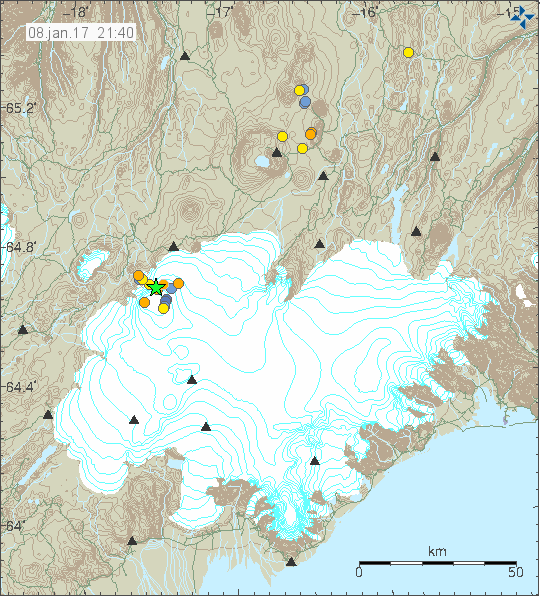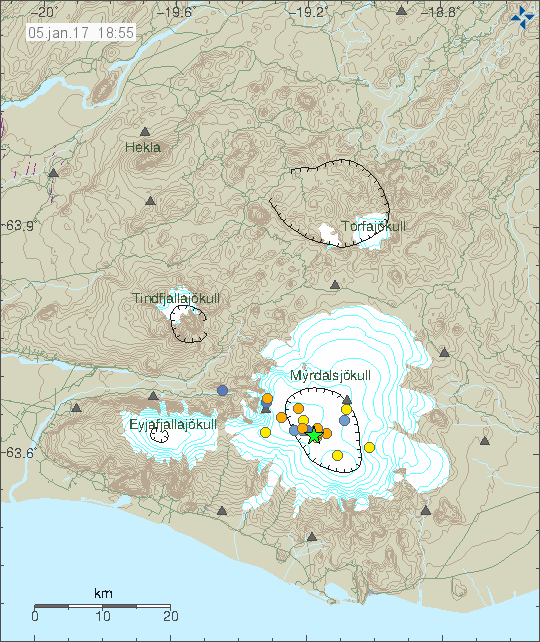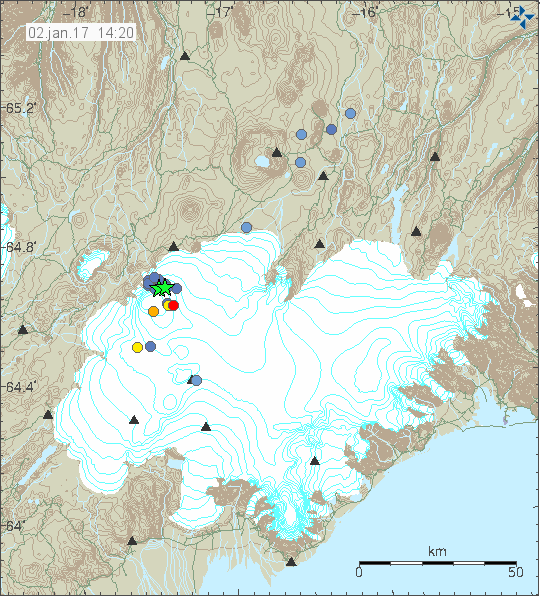Currently its quiet in Iceland, this is a fill up article while everything is quiet in Iceland.
Yesterday (18.01.2017) a earthquake swarm started in central Italy. First fore-shock had the magnitude of 5,3 (EMSC Information) and happened at 09:25 UTC (10:25 CET). The second earthquake had the magnitude of 5,7 (EMSC Information) and was clearly felt in central Italy. It was followed by aftershocks of the size 4,7 (EMSC information), 4,6 (EMSC Information), the largest aftershock during that hour had the magnitude of 5,3 (EMSC information). Since this earthquake activity more than 100 earthquakes have happened, many magnitude 4,0 earthquakes have taken place. At least one magnitude 5,2 earthquake (EMSC Information) took place at 13:33:37 UTC (14:33 CET).

The strongest earthquake so far, the magnitude Mw5,7 earthquake as it appeared on my geophone in Denmark. This image is under Creative Commons Licence, please see the CC Licence page for more details.
This earthquake swarm might mean that there are stronger earthquakes about to happen in central Italy, but there is no way to be sure about it due to complex nature of this area. I don’t fully understand the geology of this area at the moment or Italy geology in any details at the moment. I’m expecting more earthquake activity in this area for the next few days at least, based on current aftershock activity in the area. Current aftershock activity is heavy at the moment, with many earthquakes happening every hour.
Donations
Please remember to support my work with donations. At the moment I’m really broke. Thanks for the support. 🙂






